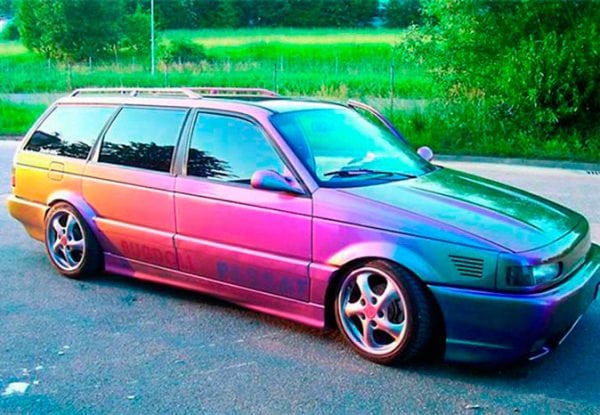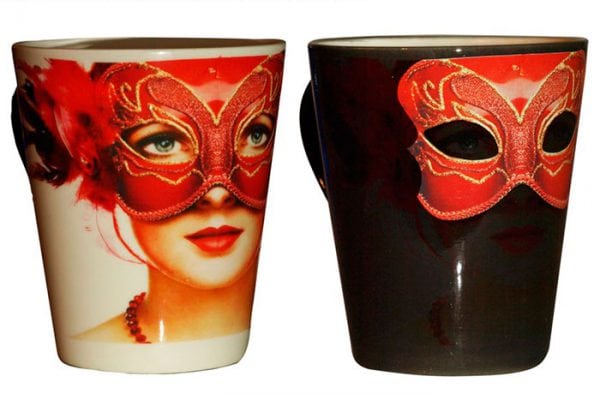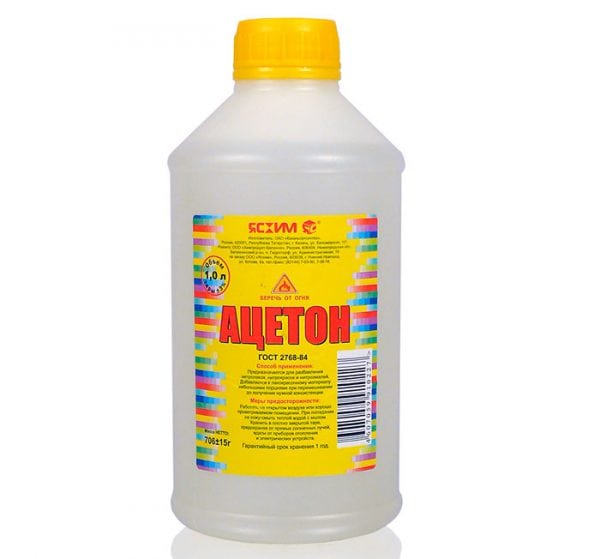Thermochromic paints are materials that tend to change color or discolor when the temperature changes. The scope of its application is very wide - fine art, printing, embossing, craftwork, the automotive industry, the material can be applied to ceramics, plastic, textiles, glass, paper. This enamel is used mainly not for decorative purposes, but as an indicator of changes in surface temperature and can be of two types:
- Return (returning its original color after lowering the temperature).
- Irrevocable (do not return the previous color after thermal exposure).

The pigments that are part of the paint, which are based on liquid crystal technology, are responsible for the color-changing properties, they are contained in the microcapsules that make up the paint. The capsule shell retains liquid crystals, so this material can be mixed with acrylic and other types of paints, or, in some cases, with clear varnish, printing inks, plastic, rubber, resin. Temperature changes occur both in production and at home - with your own hands.
The paint is heat-resistant, non-toxic (meets all the requirements necessary for the production of baby products), has a good chemical reaction, its use in the automotive industry helps to reduce the "greenhouse effect" and allows you to feel as comfortable in the car as possible even in very hot weather.
Percentage of paint in the composition of the solution:
- 5-30% - to bases on a water and oil basis.
- 0.5 - 5% - in plastics.
The proportions vary depending on what kind of result you need to achieve.
to contents ↑Temperature exposure
Thermochromic paints, which are returnable, after the end of exposure to temperature, return the color to its original state. Each type of this material has a characteristic activation temperature. When the heat-resistant enamel is heated to the activation temperature set for it, the pigment becomes colorless, and when the degrees are lowered, it returns to its original state.
Allowable temperature variation from - 15 to + 70 degrees Celsius.
- Below + 20 degrees - for applying the substance to dishes, which will be used for soft drinks.
- + 29 ... + 31 degrees - suitable for surfaces that will change color when exposed to body temperature (when touched). The use of this effect is widely used for advertising purposes, on T-shirts, in magazines and on booklets.
- Above + 43 degrees - materials intended for products that will interact with hot temperature (dishes for hot drinks). In this case, the effect of color change performs not only a decorative, but also a warning function.

The highest exposure temperature is 280 C, but it is better to process it at lower rates, for example, 230 C, especially when using more heat-sensitive materials (plastic, textile)
to contents ↑Application Methods
The application of thermochromic enamel on the surface is no different from the usual paint coating and you can do it yourself: roller, airbrush, brush or sponge. When working with a spray gun, the application will be as uniform as possible, with a minimum consumption of paint.
20 ml of acrylic enamel with pigment added to it is enough for about 0.3 square meters, depending on what saturation you need to achieve.
In case of application on non-absorbent surfaces, the paint should be diluted with water dispersion varnish or any other acrylic emulsion.
When coating the surface with water-based material, it is necessary to wait a few minutes for the paint to dry, or to reduce the waiting time by exposure to jets of hot air.
to contents ↑Application
- Dishes (mugs and bottles for hot and cold drinks made of glass or ceramics. Putting such a bottle in the refrigerator is very easy, without touching it, by color, determine how much it has cooled and is ready for use).
- Clothing (T-shirts with print).
- Magazines.
- Promotional materials.
- Children's goods (for example, toys intended for swimming, as a child’s entertainment, or dishes, with which it is convenient to determine the temperature of the liquid poured there).
- Protection for packaging (on pharmaceutical or cosmetic products, irreversible heat-resistant substances are used in this area).
to contents ↑
Palette
| room | Color name | Panton |
|---|---|---|
| VK - 01 | Red | 186С |
| VK - 02 | Yellow | 108C |
| VK - 03 | Blue | 301U |
| VK - 04 | Green | 335C |
| VK - 05 | The black | Black5c2x |
| VK - 06 | Purple | 2728C |
| VK - 07 | Navy blue | 294C |
| VK - 08 | Bright blue | 320C |
| VK - 09 | Sky blue | 313C |
| VK - 10 | Grassy yellow | 802U |
| VK - 11 | Orange | 021C |
| VK - 12 | Cantina | Rubine red c |
| VK - 13 | Rose red | Rose Red 807C2X |
| VK - 14 | Scarlet | 185C |
| VK - 15 | Brown | 497C |
When using different types of substances, the color may change not by one but by several, depending on the degree of heating.
to contents ↑
Solvents
Heat-resistant paints are compatible with the following solvents: water, white spirit, ethanol, xylene, butanone oxime. This material is incompatible with acetone, propyl acetate and ammonium. You can dissolve the substance with your own hands at home.

Recommendations
It is not advisable to store thermochromic materials in direct sunlight, since the paint may lose its color changing ability. It must be borne in mind that the shelf life of thermochromic paint does not exceed two months, after which gelation occurs.
The service life of heat-resistant enamel will increase if you use a top coating - UV-protective varnish when applying.
Before starting the serial production of materials with application, it is necessary to conduct production tests on your own, with your own hands, since the final effect depends on many factors and can be different, so when testing you will have the opportunity to adjust the temperature, mixing ratio and shade.




